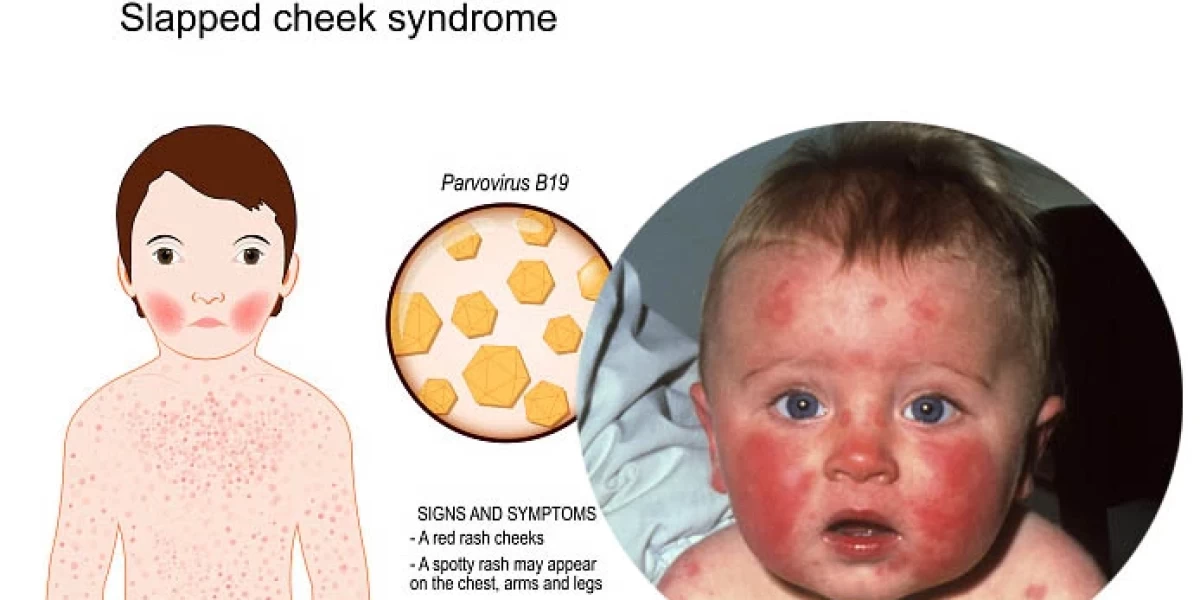Introduction
Autism, or autism spectrum disorder (ASD), is a complex neurodevelopmental condition that affects how individuals perceive, communicate, and interact with the world around them. It is estimated that 1 in 100 children globally are diagnosed with autism, making it a significant public health concern. The term “spectrum” reflects the wide range of symptoms and severity, meaning each person with autism experiences it uniquely. Understanding autism is crucial for fostering awareness, acceptance, and support for those affected. Increased awareness can lead to early diagnosis and intervention, which are vital for improving outcomes and quality of life. Moreover, acceptance and support from society can help individuals with autism lead fulfilling lives and contribute meaningfully to their communities.
Signs and Symptoms of Autism

Autism spectrum disorder (ASD) manifests through a variety of signs and symptoms, which can differ greatly among individuals. These symptoms generally fall into three main categories: communication challenges, social interaction difficulties, and repetitive behaviors.
Communication Challenges
People with autism often face significant challenges in communication. This can include delayed speech development, difficulty in maintaining conversations, and a tendency to use language in unusual ways. Some individuals may be nonverbal, while others might have advanced vocabularies but struggle with the pragmatic aspects of communication, such as understanding sarcasm or idioms.
Social Interaction Difficulties
Social interaction is another area where individuals with autism may experience difficulties. They might find it hard to understand social cues, such as facial expressions or body May favor independent activities over socializing and might have difficulty developing and sustaining relationships due to a preference for individual pursuits. Some individuals may also exhibit a lack of interest in sharing experiences or emotions with others.
Repetitive Behaviors
Repetitive actions and limited interests are key characteristics of autism. These can include repetitive movements like hand-flapping or rocking, insistence on sameness, and intense focus on specific topics or activities. Such behaviors can provide comfort and predictability for individuals with autism but may also interfere with daily functioning.
Causes and Risk Factors of Autism
Autism spectrum disorder (ASD) is a multifaceted condition without a clearly defined cause. Current research suggests that a combination of genetic and environmental factors contribute to the development of autism Genetic Factors play a significant role, with studies indicating that individuals with a family history of autism are at a higher risk. Specific genetic mutations, such as those affecting the synaptic function and neural connectivity, have been linked to ASD. Additionally, conditions like fragile X syndrome and Rett syndrome are associated with a higher incidence of autism.
Environmental Factors also influence the likelihood of developing autism. Prenatal exposure to certain substances, such as valproic acid and thalidomide, has been linked to an increased risk of ASD. Maternal health conditions, including diabetes, obesity, and infections during pregnancy, can also elevate the risk Parental Age is another significant risk factor, with advanced maternal and paternal ages being associated with a higher likelihood of having a child with autism. Furthermore, complications during birth, such as low birth weight and preterm delivery, have been identified as potential risk factors.
Timely detection and support are essential for enhancing outcomes for people with autism. By recognizing the genetic predispositions and environmental influences, healthcare providers can better support families and develop targeted strategies to mitigate the risk of autism.
How Is Autism Diagnosed?
Diagnosing autism spectrum disorder (ASD) involves a comprehensive evaluation process that includes multiple assessments and observations. The Diagnostic Criteria for autism are outlined in the American Psychiatric Association’s Diagnostic and Statistical Manual of Mental Disorders, Fifth Edition (DSM-5). According to the DSM-5, a diagnosis of ASD requires persistent deficits in social communication and social interaction across multiple contexts, along with restricted, repetitive patterns of behavior, interests, or activities.
Early Diagnosis and Intervention are critical for improving outcomes for individuals with autism. Pediatricians often conduct developmental screenings during routine well-child visits at 18 and 24 months. If these screenings indicate potential developmental delays, a more detailed evaluation is recommended. This evaluation typically involves a team of specialists, including developmental pediatricians, child psychologists, and speech-language pathologists.
Assessments and Evaluations used in diagnosing autism include standardized tools such as the Autism Diagnostic Observation Schedule (ADOS) and the Autism Diagnostic Interview-Revised (ADI-R). These tools involve structured interactions and interviews to assess communication, social skills, and behavior. Additionally, cognitive and language assessments, as well as medical tests to rule out other conditions, are often part of the diagnostic process. Observations of the child’s behavior in different settings, along with input from parents and caregivers, provide a comprehensive understanding of the child’s developmental profile.
Treatment and Medication Options for Autism
Autism spectrum disorder (ASD) requires a multifaceted approach to treatment, tailored to the unique needs of each individual. Behavioral Therapies are foundational in managing autism. Applied Behavior Analysis (ABA) is one of the most widely used therapies, focusing on improving specific behaviors such as social skills, communication, and learning through reinforcement strategies. Other behavioral interventions include the Early Start Denver Model (ESDM) and Pivotal Response Treatment (PRT), which are designed to enhance developmental rates in young children.
Educational Interventions are crucial for children with autism. Individualized Education Programs (IEPs) are developed to meet the specific educational needs of each child, ensuring they receive appropriate support in school settings. Special education services often include speech-language therapy to improve communication skills and occupational therapy to enhance daily living skills. Social skills training is also a key component, helping individuals with autism navigate social interactions more effectively.
Medication can be used to manage specific symptoms associated with autism, such as anxiety, depression, and hyperactivity. While there is no medication that cures autism, certain drugs can help alleviate symptoms and improve quality of life. For example, selective serotonin reuptake inhibitors (SSRIs) are often prescribed to manage anxiety and depression, while antipsychotic medications can help reduce severe behavioral issues.
The importance of Personalized Treatment Plans cannot be overstated. Each individual with autism has unique strengths and challenges, and treatment plans must be tailored to address these specific needs. A comprehensive approach that combines behavioral therapies, educational interventions, and medication, along with family support and community resources, can significantly enhance the developmental outcomes and quality of life for individuals with autism.
Complications of Autism
Individuals with autism spectrum disorder (ASD) often face a range of complications and co-occurring conditions that can impact their daily lives Anxiety and Depression are common among people with autism, often resulting from difficulties in social interactions and communication. These mental health issues can exacerbate the challenges faced by individuals with autism, making it essential to address them through appropriate therapeutic interventions and support.
Learning Disabilities are another significant complication. Many individuals with autism have varying degrees of intellectual disability, which can affect their ability to learn and perform in academic settings. Tailored educational strategies and support services are crucial to help these individuals achieve their full potential.
Sensory Processing Issues are also prevalent, where individuals may be overly sensitive to sensory stimuli such as lights, sounds, and textures. This can lead to significant discomfort and behavioral challenges, requiring specialized interventions to help manage sensory sensitivities.
Gastrointestinal Problems are frequently reported in individuals with autism, including chronic constipation, diarrhea, and other digestive issues. These conditions can cause significant discomfort and impact overall health, necessitating medical management and dietary adjustments.
Seizures and Epilepsy are more common in individuals with autism compared to the general population. Regular monitoring and appropriate medical treatment are essential to manage these conditions and prevent complications.
Research and Statistics: Who Has Autism?
Autism spectrum disorder (ASD) is a prevalent condition affecting millions worldwide. According to the latest data from the CDC’s Autism and Developmental Disabilities Monitoring (ADDM) Network, approximately 1 in 36 children in the United States is diagnosed with autism. This prevalence has increased significantly over the past two decades, highlighting the growing impact of autism on public health. ASD affects individuals across all racial, ethnic, and socioeconomic groups, although it is nearly four times more common in boys than in girls. The reasons for this gender disparity are still under investigation, with ongoing research exploring genetic, hormonal, and environmental factors.
Demographic Trends show that autism is diagnosed more frequently in certain populations. For instance, recent studies indicate that non-Hispanic white children are diagnosed with autism at higher rates compared to children from other racial and ethnic backgrounds. However, disparities in access to diagnostic services and healthcare may contribute to these differences. Efforts to improve early diagnosis and intervention across diverse communities are crucial for addressing these disparities and ensuring equitable support for all individuals with autism.
Ongoing Research is vital for advancing our understanding of autism and developing effective interventions. Researchers are investigating the genetic underpinnings of autism, with studies identifying numerous genes associated with the condition. Environmental factors, such as prenatal exposure to certain substances and maternal health conditions, are also being studied for their potential role in autism development. Additionally, research into early intervention strategies and personalized treatment plans is helping to improve outcomes for individuals with autism. By continuing to invest in autism research, we can enhance support systems and improve the quality of life for those affected by this condition.
Strategies for Managing Autism
Managing autism effectively requires a comprehensive approach that includes practical strategies for parents, educators, and caregivers For Parents, establishing a structured routine can provide a sense of predictability and security for children with autism. Visual schedules and clear, consistent communication can help children understand expectations and reduce anxiety. Positive reinforcement and reward systems can encourage desired behaviors and skills development. Additionally, parents should seek out support groups and resources to connect with other families and share experiences and strategies.
For Educators, creating an inclusive classroom environment is essential. This includes using individualized education plans (IEPs) to tailor learning experiences to each student’s needs. Incorporating sensory-friendly spaces and tools, such as noise-canceling headphones and fidget toys, can help students with sensory sensitivities focus and participate more effectively. Social skills training and peer support programs can also foster positive interactions and friendships among students with and without autism.
For Caregivers, understanding and addressing sensory sensitivities is crucial. This may involve modifying the environment to reduce sensory overload, such as using soft lighting and minimizing loud noises. Engaging in activities that align with the individual’s interests and strengths can promote engagement and skill development. Caregivers should also advocate for access to community resources, such as therapy services and recreational programs, to support the individual’s overall well-being.
Support Networks and Advocacy play a vital role in enhancing the quality of life for individuals with autism. Building a strong support network that includes family, friends, healthcare providers, and community organizations can provide essential resources and emotional support. Advocacy efforts, both at the local and national levels, are important for raising awareness, securing funding for research and services, and promoting policies that support individuals with autism and their families. By working together, we can create a more inclusive and supportive society for everyone affected by autism.
The Importance of Awareness and Acceptance
Awareness and acceptance of autism are crucial for creating a more inclusive and supportive society Greater Awareness helps people understand what autism is and how it affects individuals, fostering empathy and reducing misconceptions. Education plays a vital role in this process. By incorporating autism education into school curriculums and community programs, we can teach children and adults alike about the diverse ways autism can manifest. This understanding can dismantle stereotypes and promote a more accepting attitude towards individuals with autism.
Reducing Stigma is another significant benefit of increased awareness. Stigma often arises from ignorance and fear of the unknown. When people are educated about autism, they are less likely to hold prejudiced views and more likely to support inclusive practices. Public awareness campaigns, positive media representation, and personal stories from individuals with autism can all contribute to changing societal perceptions.
Promoting Inclusivity involves creating environments where individuals with autism feel valued and understood. This can be achieved through practical measures such as implementing sensory-friendly spaces, providing appropriate accommodations in schools and workplaces, and encouraging social interactions that respect the unique needs of autistic individuals. Inclusivity also means recognizing and celebrating the strengths and contributions of people with autism, rather than focusing solely on their challenges.
Educational and Training Programs for professionals and the general public are essential for fostering a deeper understanding of autism. These programs can equip teachers, employers, healthcare providers, and community members with the knowledge and skills needed to support individuals with autism effectively. By promoting awareness and acceptance, we can build a society that not only accommodates but also celebrates neurodiversity.
Conclusion
In conclusion, understanding autism is essential for fostering a more inclusive and compassionate society. Awareness and acceptance are key to reducing stigma and promoting inclusivity for individuals with autism. By educating ourselves and others about autism, we can break down barriers and create environments where everyone feels valued and supported. Early diagnosis and intervention, personalized treatment plans, and comprehensive care are crucial for improving the quality of life for individuals with autism. Additionally, ongoing research and statistics highlight the growing prevalence of autism and the need for continued efforts to support affected individuals and their families.
Encouraging readers to continue learning about autism and supporting those affected by it is vital. Whether through participating in awareness campaigns, advocating for inclusive policies, or simply being a supportive friend or family member, everyone can play a role in fostering a more understanding and accepting society. By working together, we can ensure that individuals with autism have the opportunities and support they need to thrive.
Frequently Asked Questions(FAQs)
| Question |
Answer |
| 01. What is autism causes symptoms and treatment? |
Autism spectrum disorder (ASD) is caused by a combination of genetic and environmental factors. Symptoms include difficulties in social interaction, communication challenges, and repetitive behaviors. Treatment options include behavioral therapies, educational interventions, and medications. |
| 02. What causes autism? |
Autism is caused by a combination of genetic mutations and environmental factors. Genetic predispositions, prenatal exposure to certain substances, and parental age are significant contributors. |
| 03. How to manage your autism? |
Managing autism involves establishing routines, using visual aids, engaging in behavioral therapies like ABA, and utilizing support networks. Sensory integration strategies and social skills training are also beneficial. |
| 04. What is the main diagnosis of autism? |
The main diagnosis of autism is based on the DSM-5 criteria, which include persistent deficits in social communication and interaction, and restricted, repetitive patterns of behavior. |
| 05. What is the best treatment for autism in the world? |
There is no single “best” treatment for autism, as it varies by individual. However, Applied Behavior Analysis (ABA) is widely regarded as an effective therapy. Early intervention and personalized treatment plans are crucial. |
| 06. Who diagnosed autism? |
Autism is diagnosed by healthcare professionals such as developmental pediatricians, child psychologists, and neurologists using standardized diagnostic tools and criteria. |
| 07. At what age is autism diagnosed? |
Autism can be diagnosed as early as 18 months, but most diagnoses occur between ages 2 and 4 when symptoms become more apparent. |
| 08. What are the five symptoms of autism? |
Five common symptoms of autism include: difficulties with social interactions, delayed speech development, repetitive behaviors, intense focus on specific interests, and sensory sensitivities. |
| 09. Who first diagnosed autism? |
Autism was first described by Dr. Leo Kanner in 1943, who identified the condition in a group of children with similar behavioral patterns. |













